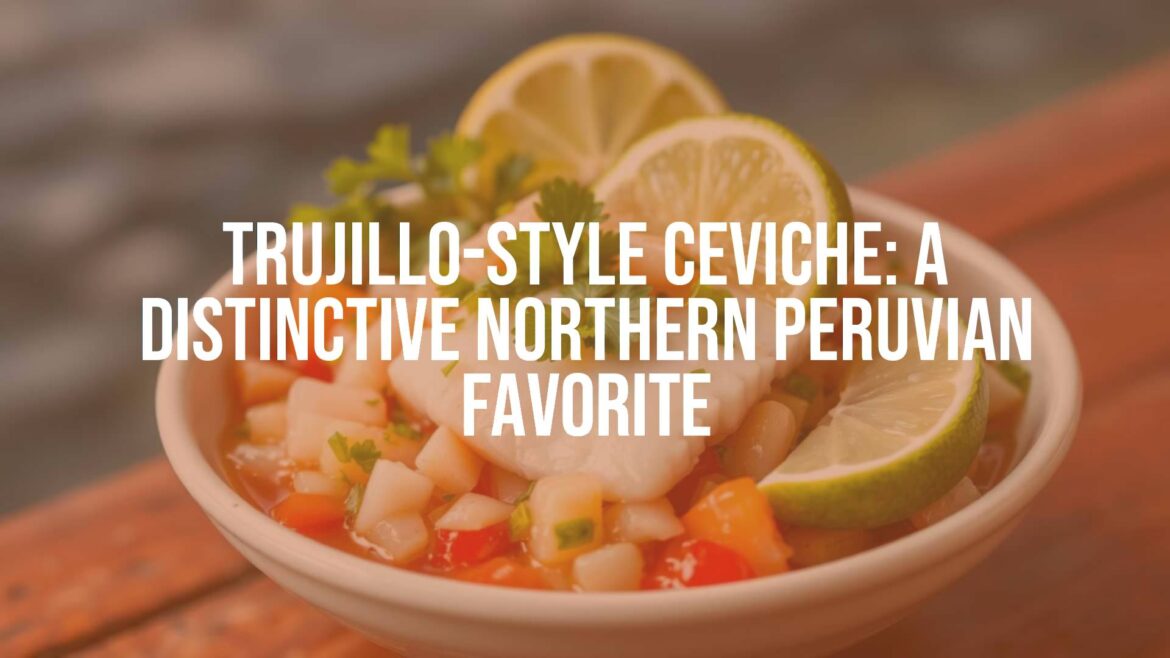Trujillo-style Ceviche: A Distinctive Northern Peruvian Favorite
Introduction to Trujillo-style Ceviche
Trujillo, a vibrant coastal city in northern Peru, is celebrated not only for its rich cultural heritage and colonial architecture, but also for its unique take on Peru’s beloved national dish: ceviche. While ceviche is a staple throughout the country, the Trujillo-style variant stands out for its distinct flavors, preparation, and regional ingredients that reflect the spirit of the north coast.
What Sets Trujillo-style Ceviche Apart?
Unlike the more widely known limeño ceviche from Lima, which is typically sharp and quickly marinated, ceviche in Trujillo often features a longer marination time and a more complex layering of flavors. It is commonly prepared with firm, white fish such as cabrilla or corvina, locally sourced from the Pacific coast. A hallmark of Trujillo-style ceviche is the use of ají mochero, a native yellow chili that imparts a fruity, moderate heat and signature aroma to the dish. Another distinguishing feature is the robust seasoning with garlic and sometimes a hint of celery, giving it a deeper flavor profile compared to some southern versions.
Key Ingredients and Visual Appeal
The main ingredients include freshly caught white fish, lime juice (often abundant and slightly sweeter in the region), thinly sliced red onions, chopped cilantro, ají mochero, and optionally, minced garlic. The ceviche is visually striking: glistening chunks of fish bathed in a pale, citrusy marinade, punctuated by bursts of bright yellow and vibrant green from the chilis and herbs. Garnishes commonly include seaweed, boiled sweet potato, corn on the cob (choclo), and crunchy cancha (toasted corn), each adding texture and flavor balance.
Origins and Regional Significance
Ceviche’s roots stretch back to pre-Columbian times, but the Trujillo variation reflects the culinary intermingling of ancient Mochica traditions with influences from Spanish and even Asian cuisines. The continued use of local fish and native chilies demonstrates the region’s dedication to preserving culinary heritage. In Trujillo, ceviche is more than just a meal—it is a symbol of coastal identity and pride, often enjoyed during family gatherings, festive occasions, and bustling seafood markets.
Cultural Importance and Tradition
Sampling ceviche in Trujillo is a sensory experience that goes beyond taste: it is intertwined with the city’s vibrant festivals, music, and infectious warmth of its people. The dish is a must-have during El Festival de la Marinera and other local celebrations, where it is served alongside other iconic northern Peruvian specialties. Street vendors and restaurants alike vie to present the freshest, most flavorful version, each boasting subtle twists to the classic recipe.
How Trujillo-style Ceviche is Served
Traditionally, Trujillo-style ceviche is served as an appetizer or a main course, always with accompaniments designed to temper the tangy marinade and complement the bold flavors. Sweet potato slices and corn provide a gentle sweetness, toasted cancha offers a satisfying crunch, and sometimes, a piece of yuyo (local seaweed) adds a taste of the ocean. The dish is best enjoyed freshly made, capturing the contrast between the firm, marinated fish and the bright zing of citrus and chili.
Conclusion
Trujillo-style ceviche is a testament to northern Peru’s culinary ingenuity and deep connection to the sea. By marrying traditional ingredients with local flavor, this version of ceviche honors its heritage while continuing to tempt generations of food lovers, both locally and internationally. To experience the essence of Trujillo is, in many ways, to savor its unforgettable ceviche.


